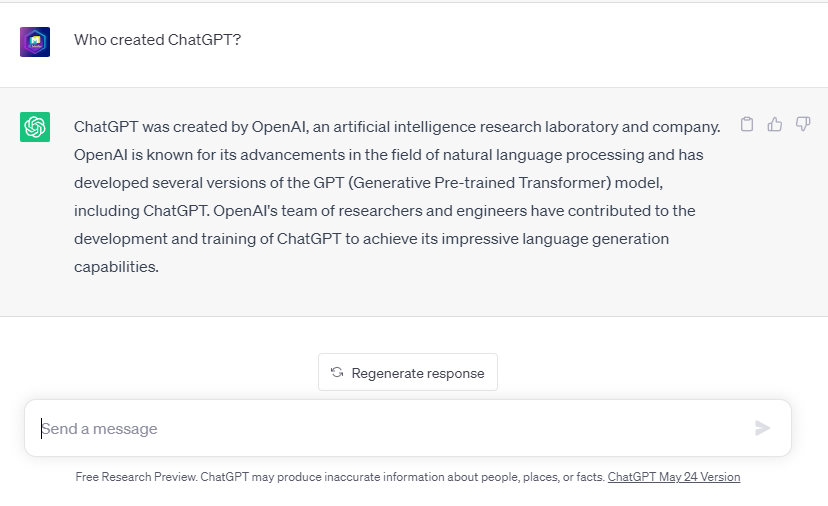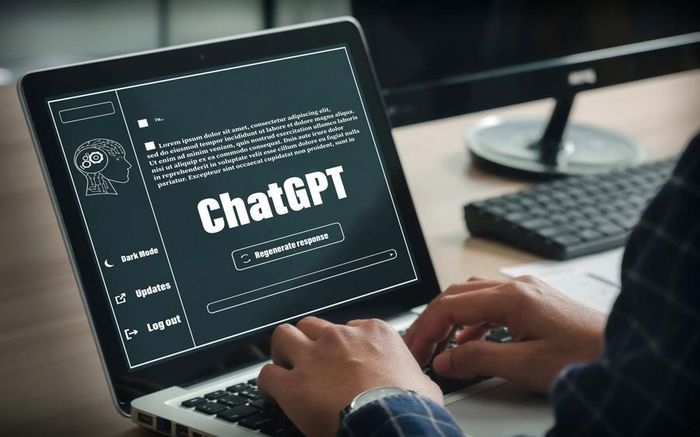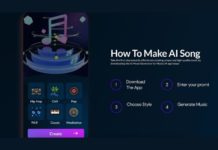ChatGPT is an AI chatbot that uses natural language processing to create humanlike conversational dialogue. The language model can respond to questions and compose various written content, including articles, social media posts, essays, code and emails.
Chat-GPT is a form of generative AI – a tool that lets users enter prompts to receive humanlike images, text or videos that are created by AI.
![]()
Chat-GPT is similar to the automated chat services found on customer service websites, as people can ask it questions or request clarification to ChatGPT’s replies. The GPT stands for “Generative Pre-trained Transformer,” which refers to how Chat-GPT processes requests and formulates responses.
ChatGPT is trained with reinforcement learning through human feedback and reward models that rank the best responses. This feedback helps augment ChatGPT with machine learning to improve future responses.
Who created ChatGPT?
ChatGPT was created by OpenAI, an artificial intelligence research laboratory and company. OpenAI is known for its advancements in the field of natural language processing and has developed several versions of the GPT (Generative Pre-trained Transformer) model, including ChatGPT.
OpenAI’s team of researchers and engineers have contributed to the development and training of ChatGPT to achieve its impressive language generation capabilities.
How does ChatGPT work?
ChatGPT harnesses the power of its Generative Pre-trained Transformer, which employs specialized algorithms to identify patterns within sequences of data. It utilizes the GPT-3 language model, a neural network machine learning model that represents the third generation of the Generative Pre-trained Transformer.
By drawing from a vast corpus of data, the transformer formulates responses with a remarkable level of sophistication.
Deep learning, a subset of machine learning, is the driving force behind ChatGPT’s ability to generate text that closely resembles human language. The transformer predicts the next word, sentence, or paragraph based on the typical sequence patterns it has learned from its training data.
The training process begins with generic data and then progresses to more tailored information specific to particular tasks. In the case of ChatGPT, it was initially trained using online text to grasp the nuances of human language. Subsequently, transcripts were utilized to familiarize it with the intricacies of engaging in conversations.
Human trainers play a vital role in refining ChatGPT’s performance. They provide conversations and rank the responses, forming the basis for reward models that determine the most optimal answers.
To further enhance the chatbot’s training, users can actively participate by expressing their feedback through upvoting or downvoting responses using the “thumbs up” or “thumbs down” icons. Additionally, users can offer written feedback to contribute to the ongoing improvement and fine-tuning of ChatGPT’s future dialogues.
What kinds of questions can users ask?
Chat-GPT serves as an interactive platform where users can seek answers to a wide range of questions, spanning from simple inquiries to more intricate ones. Whether it’s pondering the meaning of life or inquiring about the year of New York’s statehood, Chat-GPT is equipped to handle diverse queries. Notably, ChatGPT showcases proficiency in STEM fields and can assist with tasks like code debugging and writing.

The versatility of questions that can be posed to GPT knows no bounds. Nevertheless, it’s important to note that ChatGPT’s knowledge is based on data up until the year 2021, rendering it unaware of events and information beyond that timeframe. Additionally, being a conversational chatbot, users have the freedom to request further elaboration or ask ChatGPT to generate text once again if desired.
How are people using ChatGPT?
ChatGPT is versatile and can be used for more than human conversations. People have used Chat-GPT to do the following:
- Code computer programs.
- Compose music.
- Draft emails.
- Summarize articles, podcasts or presentations.
- Script social media posts.
- Create a title for an article.
- Solve math problems.
- Discover keywords for search engine optimization.
- Create articles, blog posts and quizzes for websites.
- Reword existing content for a different medium, such as a presentation transcript for a blog post.
- Formulate product descriptions.
- Play games.
- Assist with job searches, including writing resumes and cover letters.
- Ask trivia questions.
- Describe complex topics more simply.
Unlike other chatbots, ChatGPT can remember various questions to continue the conversation in a more fluid manner.
What are the limitations? How accurate is it?
Some limitations of ChatGPT include the following:
It does not fully understand the complexity of human language. ChatGPT is trained to generate words based on input. Because of this, responses may seem shallow and lack true insight.
Lack of knowledge for data and events after 2021. The training data ends with 2021 content. ChatGPT can provide incorrect information based on the data from which it pulls. If ChatGPT does not fully understand the query, it may also provide an inaccurate response. ChatGPT is still being trained, so feedback is recommended when an answer is incorrect.

Responses can sound like a machine and unnatural. Since ChatGPT predicts the next word, it may overuse words such as the or and. Because of this, people still need to review and edit content to make it flow more naturally, like human writing.
It summarizes but does not cite sources. ChatGPT does not provide analysis or insight into any data or statistics. ChatGPT may provide several statistics but no real commentary on what these statistics mean or how they relate to the topic.
It cannot understand sarcasm and irony. ChatGPT is based on a data set of text.
It may focus on the wrong part of a question and not be able to shift.
For example, if you ask ChatGPT, “Does a horse make a good pet based on its size?” and then ask it, “What about a cat?”. ChatGPT may focus solely on the size of the animal versus giving information about having the animal as a pet. ChatGPT is not divergent and cannot shift its answer to cover multiple questions in a single response.
What are the ethical concerns associated?
While ChatGPT offers valuable assistance, there are ethical concerns associated with its usage. These concerns revolve around bias, privacy and security, as well as the potential for cheating in education and work settings.
1. Plagiarism and deceitful use
One issue is the possibility of unethical behavior, such as cheating and plagiarism. Educators have expressed concerns about students using ChatGPT to cheat on assignments or produce plagiarized papers. There have also been cases where ChatGPT-generated articles contained numerous errors, highlighting the potential for deceitful use.
To combat these issues, OpenAI has implemented an AI text classifier to distinguish between human and AI-generated text. Additional tools like Copyleaks and Writing.com are available to determine the likelihood of text being AI-generated. OpenAI also plans to introduce watermarks on longer text pieces to identify AI-generated content.
Another concern is the use of Chat-GPT in cybersecurity threats. Malicious actors can leverage ChatGPT’s coding capabilities to develop malware. While OpenAI has implemented measures to address this, it remains possible for threat actors to circumvent safety protocols.
ChatGPT’s ability to imitate human writing and language style raises concerns about impersonation and the potential dissemination of sensitive information or disinformation. The chatbot can mimic the writing style of a trusted individual, leading to the collection of personal data or the spread of misleading content.
2. Bias in training data
Bias in training data is another significant ethical concern. If the data used to train ChatGPT contains biases, it can influence the bot’s output. Additionally, ChatGPT may not understand offensive or discriminatory language. Reviewing training data and including diverse and representative material can help mitigate bias and ensure more accurate results.
3. Replacing jobs and human interaction
There is also the fear that ChatGPT and similar AI technologies could replace human jobs and interactions. Tasks like data entry, customer service, and translation support may become automated, potentially leading to job displacement.
It is important to consider the impact of AI on workers and leverage ChatGPT as a supportive tool for job functions, while also creating new job opportunities to minimize employment loss.
4. Privacy issues
Privacy is a crucial issue when using ChatGPT. As the model operates based on input text, there is a risk of revealing sensitive information. The model’s output can also be used to track and profile individuals by associating information from prompts with their phone numbers and email addresses. This information is stored indefinitely, raising concerns about data privacy.
Is ChatGPT free?
ChatGPT is available for free through OpenAI’s website. Users need to register for a free OpenAI account. There is also an option to upgrade to ChatGPT Plus for unlimited access, faster responses and no blackout windows. ChatGPT Plus also gives priority access to new features for a subscription rate of $20 per month.
Without the subscription, there are limitations. The most notable limitation of the free version is access to ChatGPT when the program is at capacity. The “Plus” membership gives unlimited access to avoid capacity blackouts.
What are the alternatives to ChatGPT?
Because of ChatGPT’s popularity, it is often unavailable due to capacity issues. Google announced Bard in response to ChatGPT, and Bard will draw information directly from the internet through a Google search to provide the latest information.
Microsoft added Chat-GPT functionality to Bing, giving the internet search engine a chat mode for the user. The Chat-GPT functionality in Bing isn’t as limited because the training is up to date and doesn’t end with 2021 data and events.
Conclusion
ChatGPT is an AI chatbot developed by OpenAI that uses natural language processing to generate humanlike text responses. It has various applications but also comes with limitations. Ethical concerns include bias, privacy issues, and potential job displacement.
ChatGPT is available for free, with an optional subscription for additional features. Alternatives like Google Bard and Microsoft’s Bing integration offer similar functionalities. Overall, while ChatGPT showcases the potential of AI, responsible use and addressing challenges are important considerations.
Read more: Understanding AI Ethics: Addressing Ethical Concerns in Artificial Intelligence













